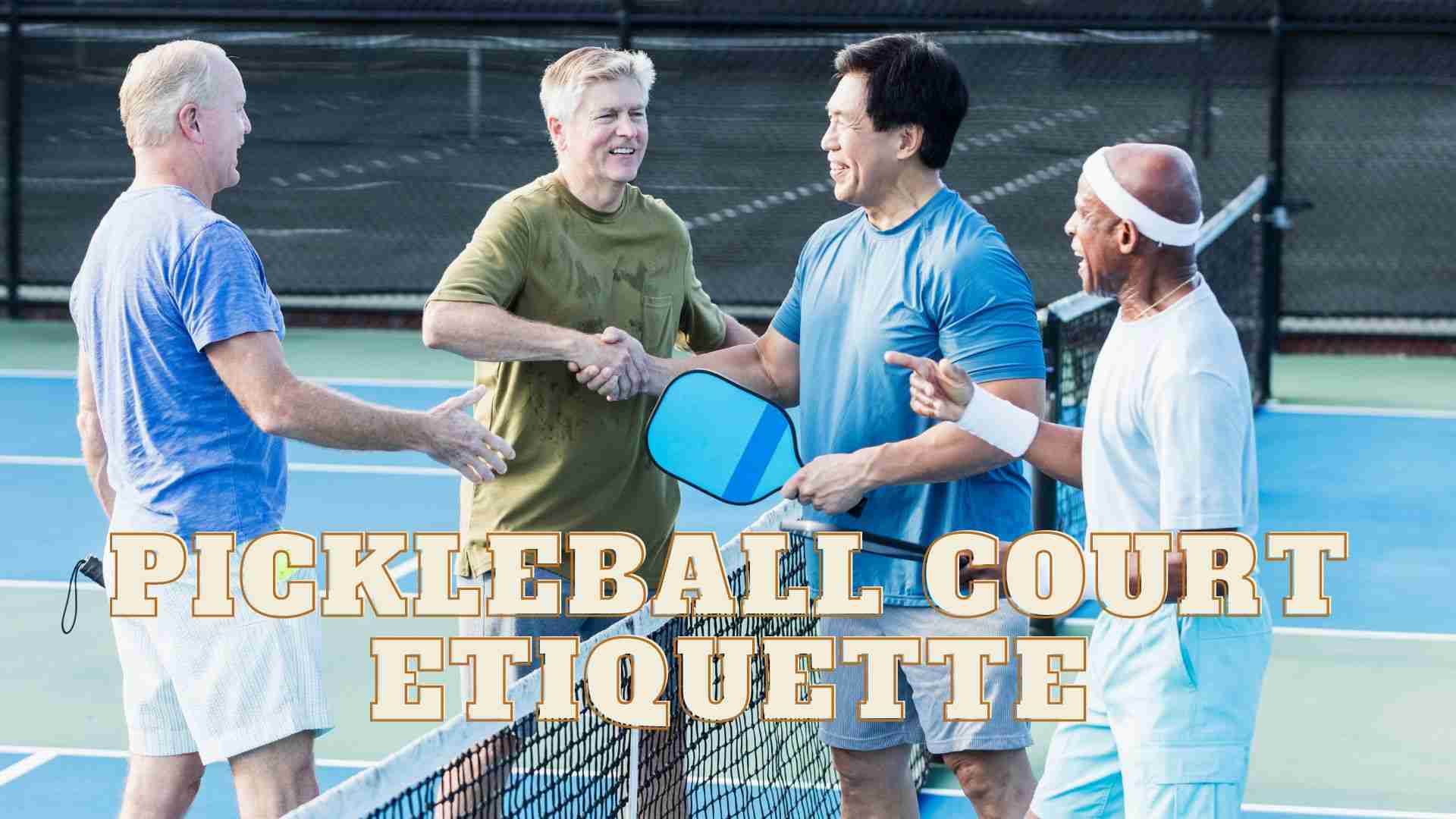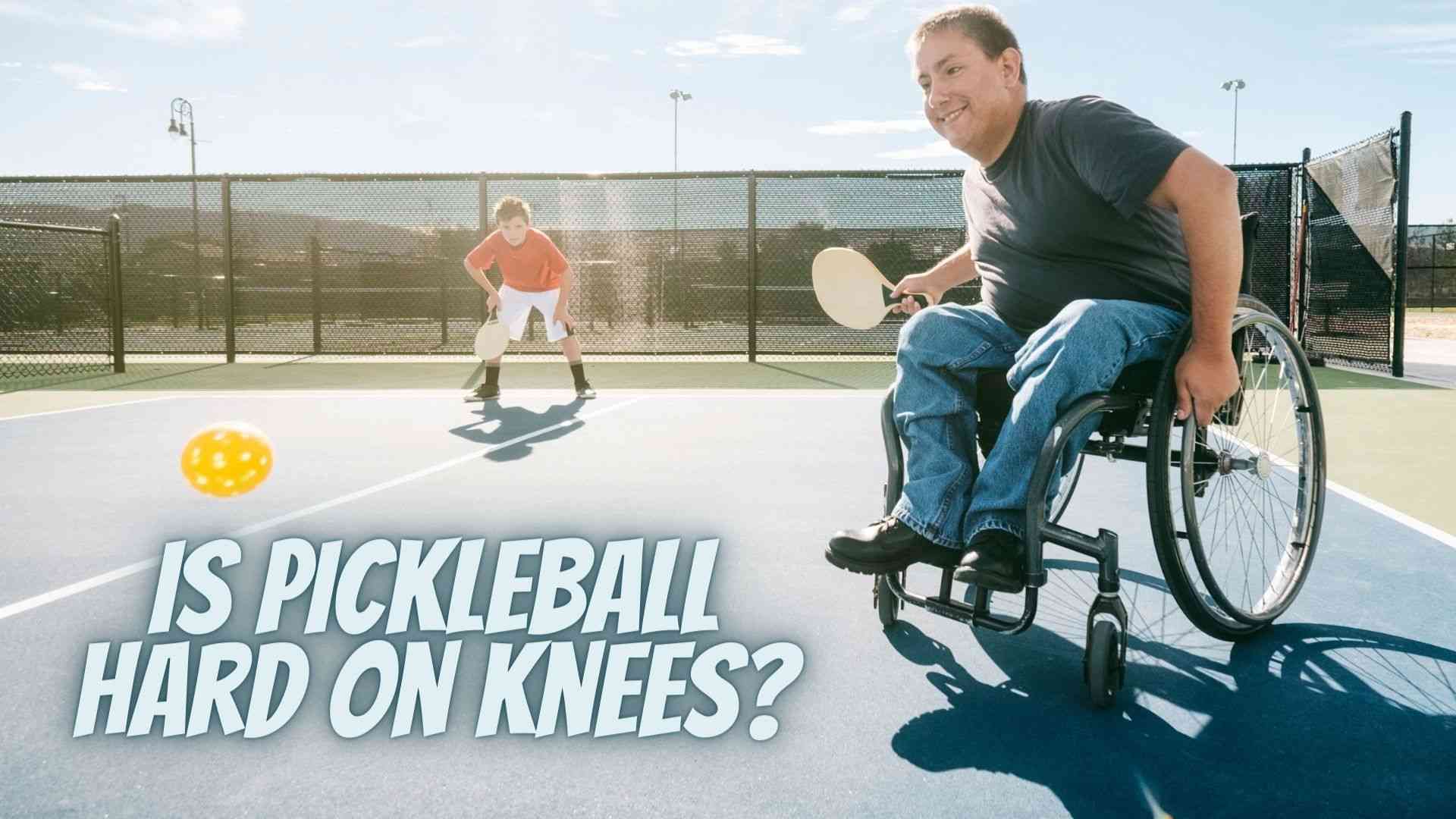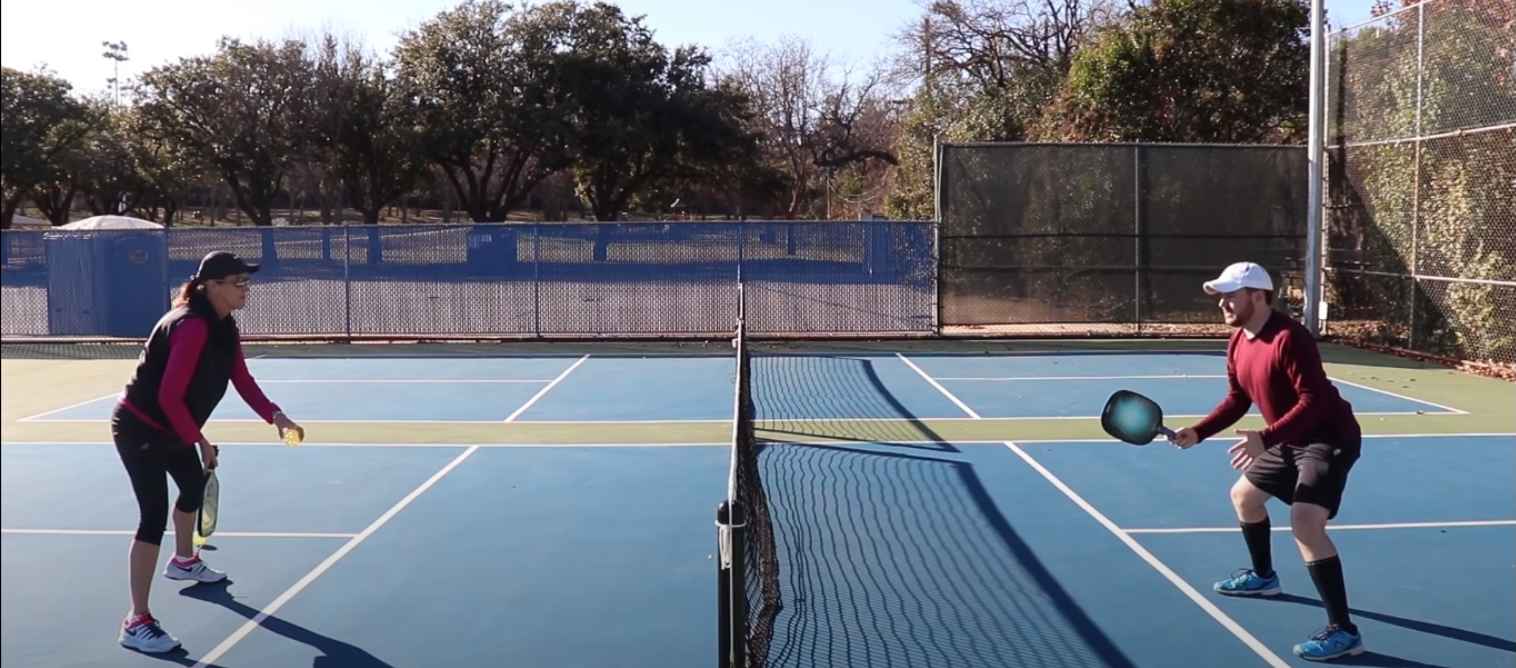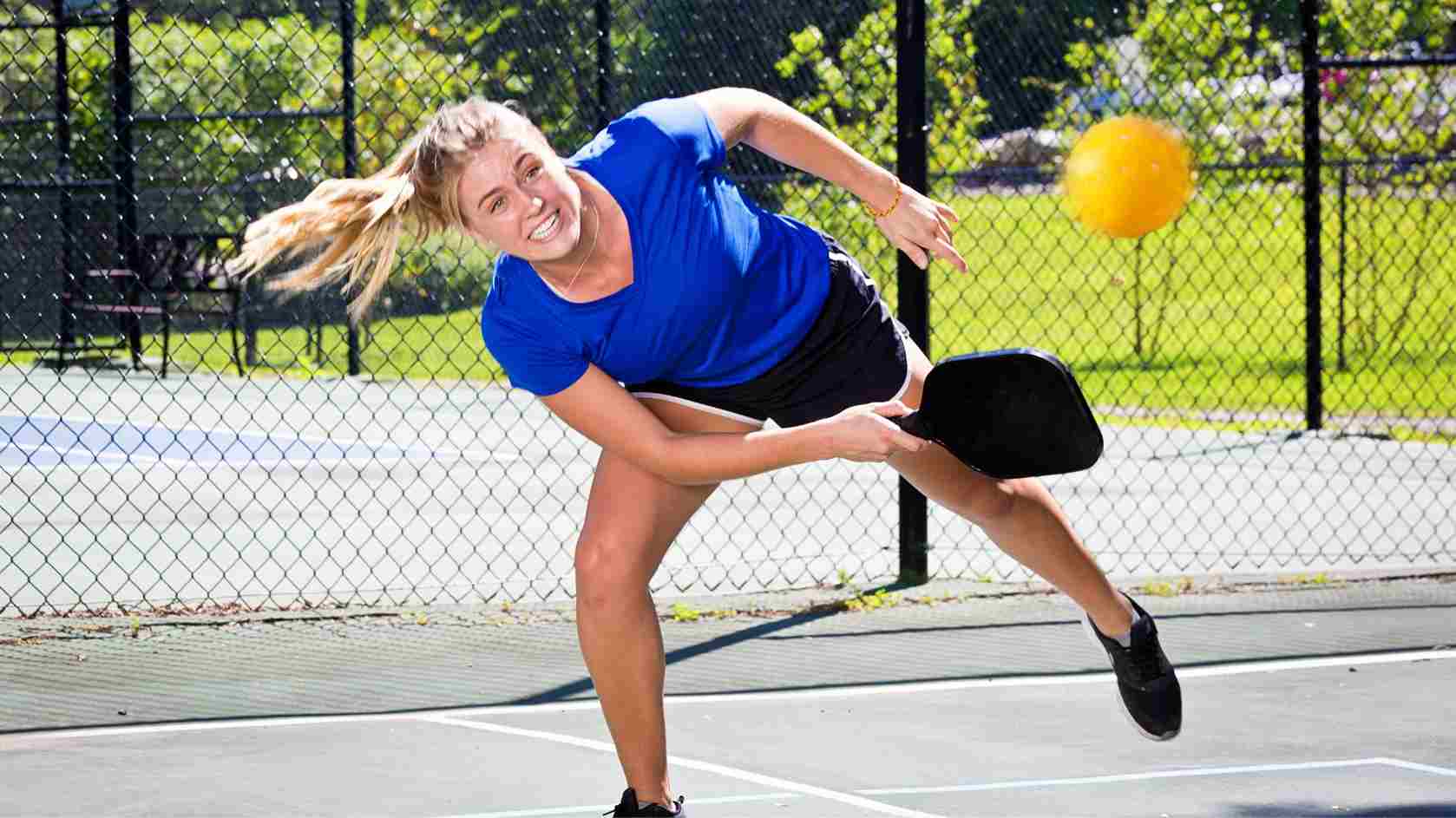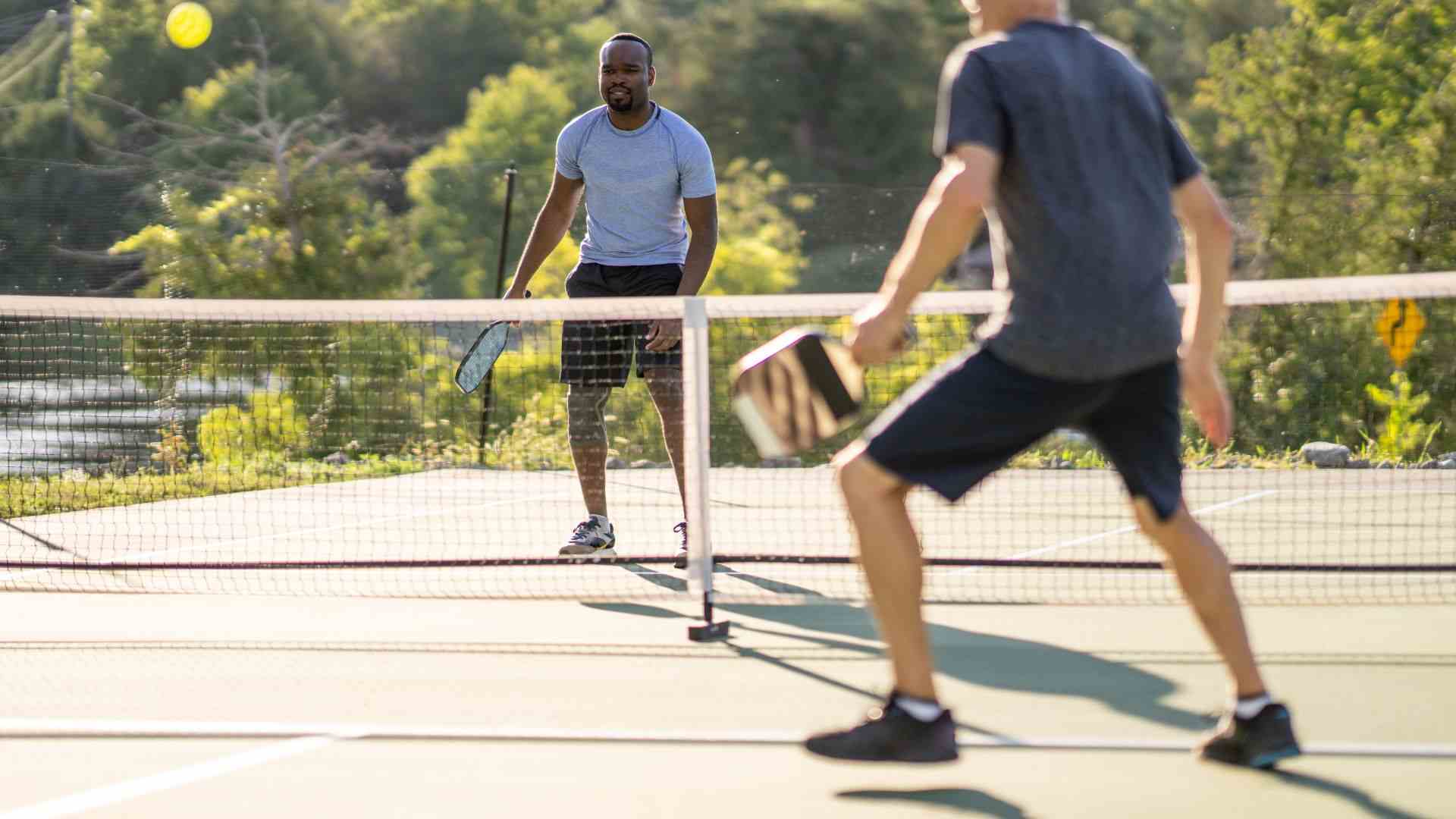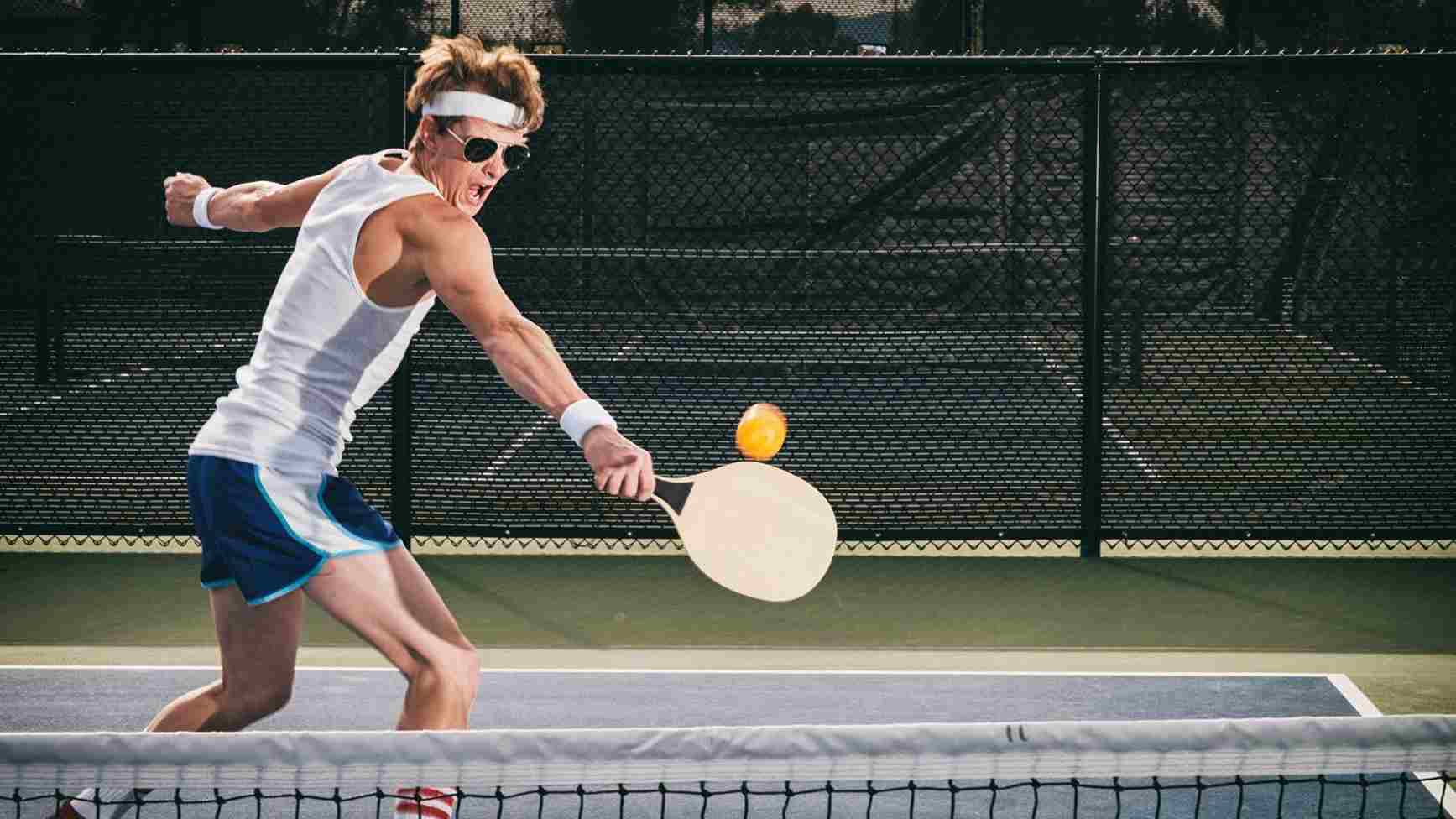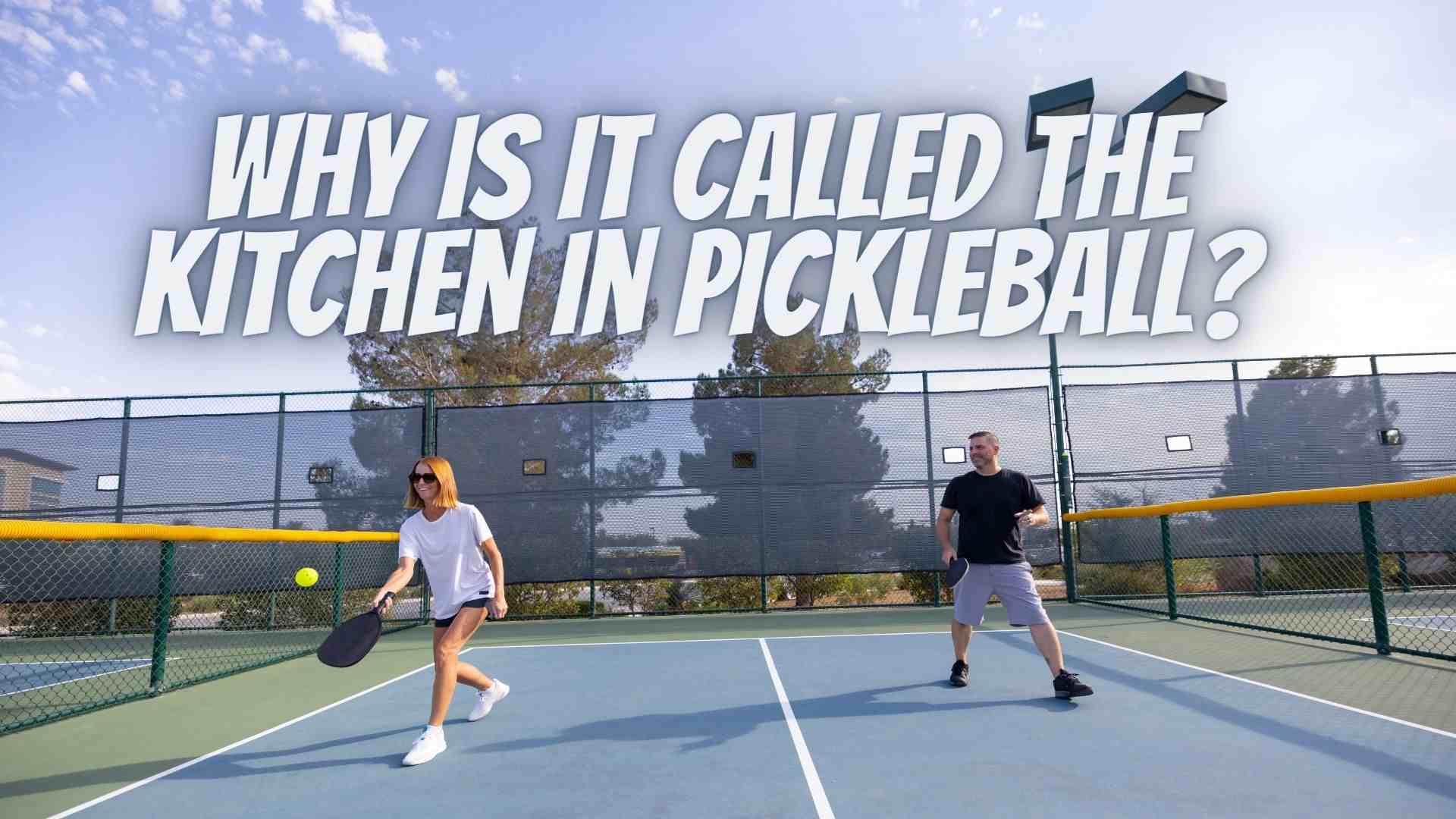
Pickleball shares some similarities with ping pong despite table tennis vs pickleball, such as the use of paddles and a lightweight ball, but it has also evolved from ping pong because of the creativity of a few dads looking to create a new game for their children into a unique sport with its own rules and culture.
Pickleball is similar to tennis, ping pong, and badminton it is a game like tennis but with paddles. It is played on a badminton-sized court, across a tennis-style net and paddles like those used in ping pong. You can easily build a pickleball court in your home, set up a net, grab paddles and you’re set to rock on the court.
Is pickleball like tennis or ping pong? It is just a matter of table and ball otherwise it’s the same. A pickleball paddle is similar to a table tennis paddle. The ball used in pickleball is quite light in weight and is a fusion of all three sports equipment.
Also. if you’re skilled at pickleball then you’re more likely to defeat even an expert player of a pickleball game like tennis, when you start to play it.
Among the differences, the pickleball court is larger than a ping pong table, and players must serve underhand. Pickleball is a game similar to tennis and ping pong and despite the differences, pickleball owes its roots to ping pong and
How Pickleball evolved from Table Tennis?
Pickleball evolved from ping pong in the mid-1960s, when three fathers in Bainbridge Island, Washington, wanted to create a new game for their children to play.
They combined elements of ping pong (a tennis like sport), badminton, and tennis to create a new game that was played on a smaller court than tennis, with paddles and a plastic ball with holes.
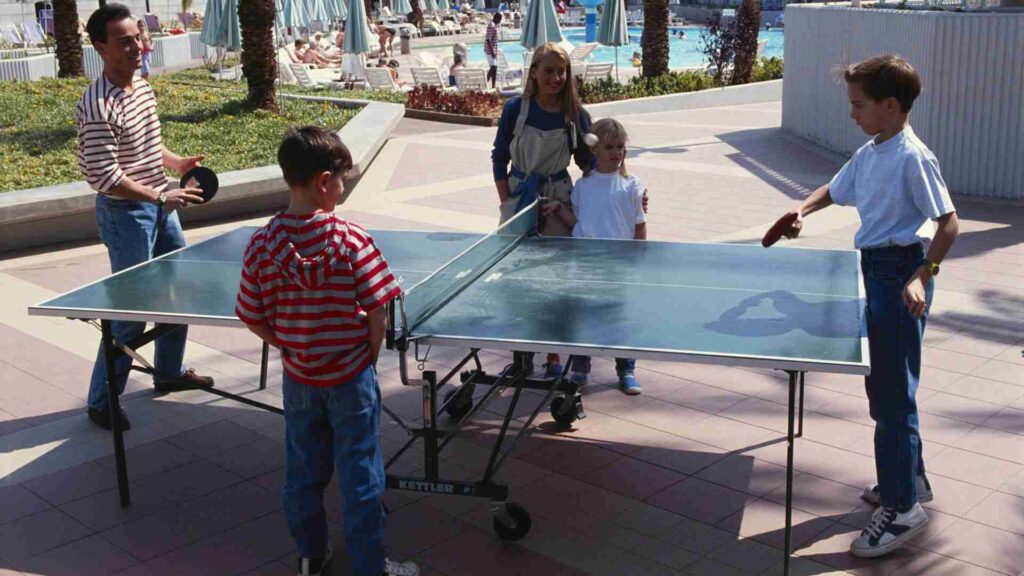
Initially, the game was called “Paddle Tennis,” but the name was changed to “Pickleball” after the family dog, Pickles, who would chase after the ball and hide it in the bushes.
The game quickly caught on in popularity in Bainbridge Island and Pacific Northwest and became known as a sport like ping pong.
Pickleball Vs Ping Pong – Differences and Similarities
Equipment
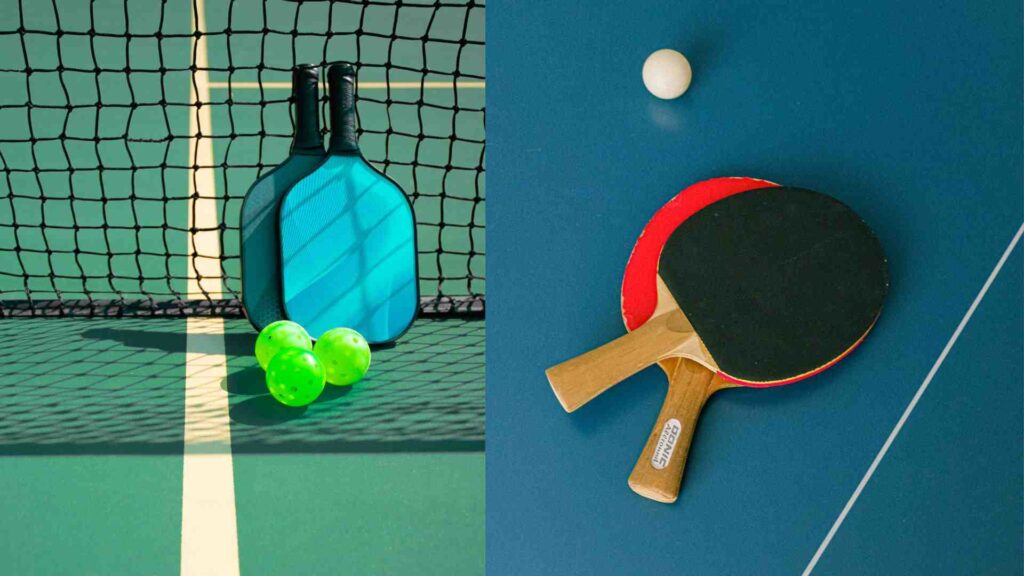
There are some similarities between the equipment used in pickleball and table tennis or ping pong, such as the use of paddles and balls, but there are also some significant differences in terms of the size and shape of the equipment.
| Equipment | Pickleball | Ping Pong |
| Ball | Lightweight, plastic with holes | Lightweight, celluloid or plastic |
| Paddle/Racket | Wooden or composite material, typically larger than a ping pong paddle | Wooden or composite material, smaller than a pickleball paddle |
| Net | Similar height to a tennis net, wider than a ping pong net | Lower than a tennis net, narrower than a pickleball net |
Rules
There are some similarities in the rules of pickleball and ping pong, such as the scoring system and doubles play, but there are also significant differences, such as the type of serve allowed and the faults that result in points for the opponent.
| Rules | Pickleball | Ping Pong |
| Serving | Underhand serve, the ball must bounce once on each side of the net | Overhand or underhand serve, the ball must bounce once on the opponent’s side of the table |
| Scoring | Games are played to 11 points, with a 2-point lead required to win | The first player to reach 11 points, with a two-point lead is required to win |
| Winning | Best of three or five games, depending on the competition level | Best of three, five, seven games, or any odd number |
| Doubles | Doubles play is common, with each team member alternating hits on every point scored. | In Doubles, each team member alternates position when 2 or 5 points are scored and is played to 15 or 21 points. |
| Faults | Hitting the ball out of bounds or into the net results in a point for the opponent | Failing to hit the ball after a bounce, hitting the ball out of bounds, or not allowing the ball to bounce on the table results in a point for the opponent |
| Let | A serve that hits the net and lands in the correct service court is a “let” and is replayed | A serve that hits the net and lands on the server’s side first then on the opponent’s, is a “let” and is replayed with no score change. |
Strategy
Despite a few of the similarities between the strategies and tactics of pickleball vs ping pong, such as the importance of footwork and spin, there are also some significant differences.
In pickleball, placement is often more important than power, while in ping pong, generating enough power to get the ball past your opponent can be crucial. Additionally, in pickleball which is more of a game like tennis, players often play close to the net, while in ping pong, players move around the table to cover more ground.
| Strategy and Tactics | Pickleball | Ping Pong |
| Spin | Spin is the key component of serves, with topspin and backspin often used for their effect on ball flight and bounce | Players use topspin, backspin, and sidespin to rotate, curve, and dip the ball in ping pong |
| Positioning | Players often play close to the net, as this allows them to take advantage of their opponent’s weaker shots | Players move around the table, trying to cover as much ground as possible and get into position to hit the ball |
| Power vs. Placement | Power can be important, but placement and grip are more crucial in pickleball, as players must hit the ball into specific areas of the court | Power is more important in ping pong, as players must generate enough speed to get the ball past their opponent |
| Footwork | Footwork is important in pickleball, as players must move quickly and be ready to hit the ball from different positions | Footwork is also important in ping pong, as players must move quickly to get into position and hit the ball |
Courts/Playing Area Table Tennis Vs Pickleball
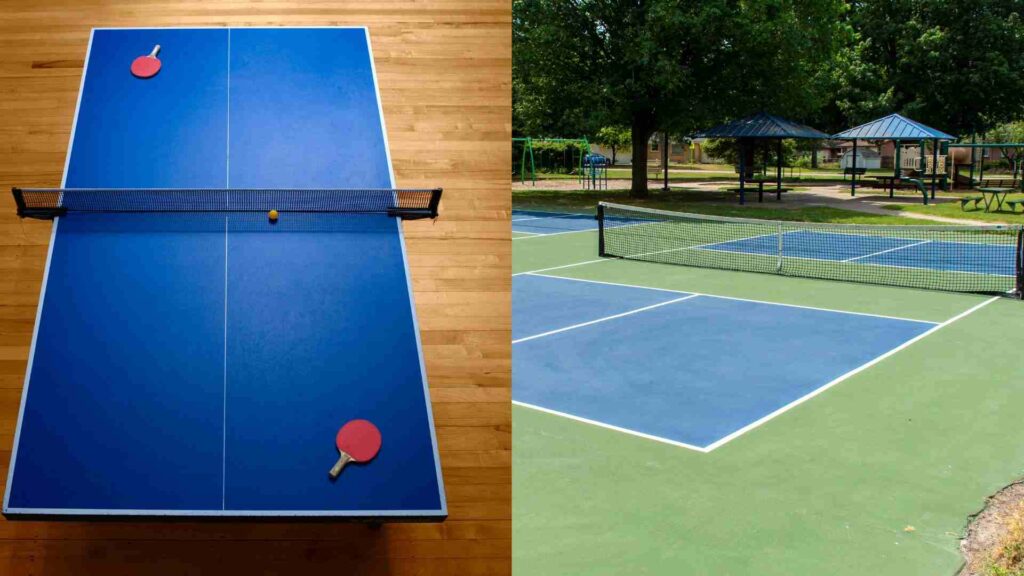
In pickleball vs ping pong, Pickleball courts are much larger than ping pong courts or tables, with dimensions similar to a badminton court. Additionally, the net used in pickleball is much higher than the net used in ping pong. While both sports use lines to mark the boundaries of the playing area, the lines used in pickleball are for a larger court and include markings for the service area.
| Court or Playing Area | Pickleball | Ping Pong |
| Size | 44 feet long by 20 feet wide | 9 feet long by 5 feet wide |
| Net | 36 inches high at the sidelines, 34 inches high in the center | 6 inches high in the center |
| Court Markings | Lines(2 inches wide) mark the boundaries of the court, including the baseline, sidelines, service area, and kitchen zone. | Lines(2cm wide) mark the boundaries of the table and the center line. |
| Surface | Outdoor courts can be made of a variety of materials, including concrete, asphalt, or acrylic | Tables are typically made of wood or composite materials |
How is Pickleball Different from other sports?
Pickleball a new game like tennis and is different from other sports like tennis, badminton, and ping pong because of the following distinctive court features and rules of pickleball:
- Kitchen rule: The non-volley zone, or kitchen, is a unique feature of pickleball that prevents players from getting too close to the net and dominating play with powerful volleys.
- Underhand serve: Pickleball is one of the few sports where the serve is typically underhand, which can create unique opportunities and challenges for players.
- Double-bounce rule: The requirement that the ball bounce twice before it can be hit in the air is a unique rule that can lead to longer rallies and strategic play.







